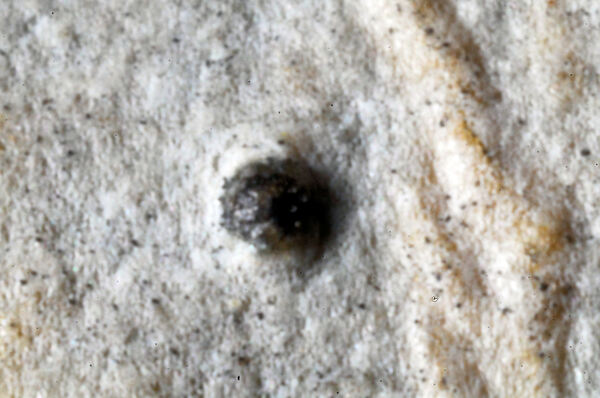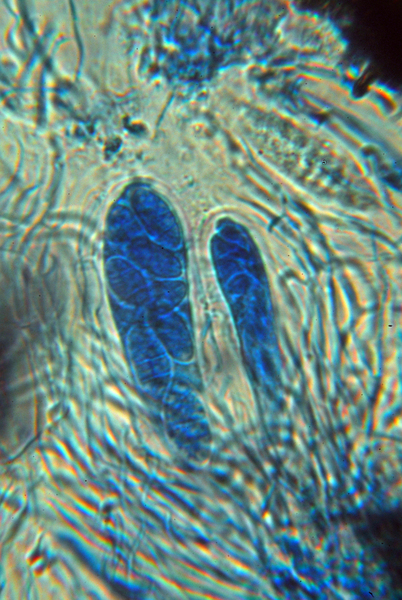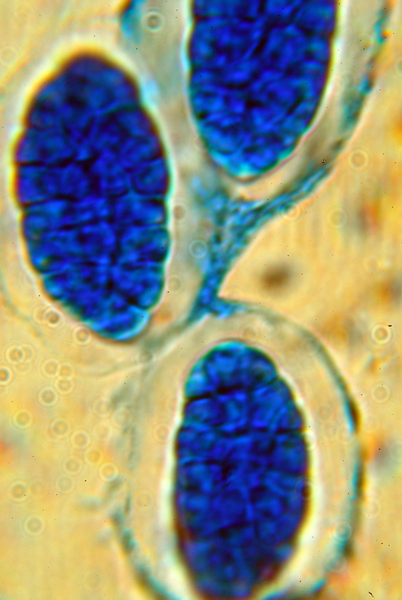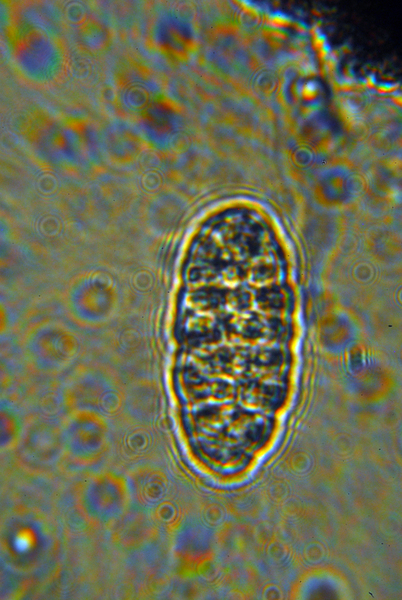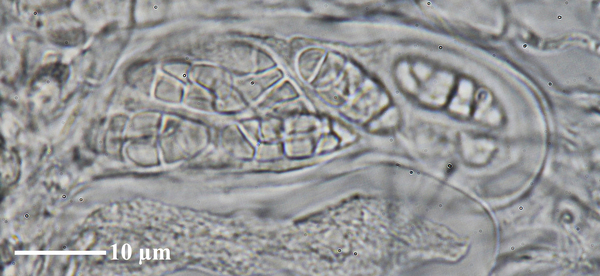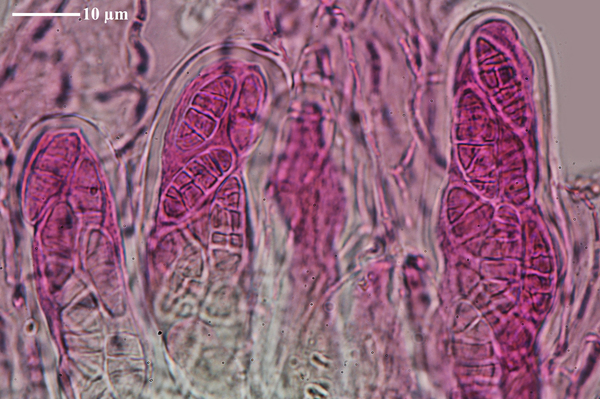Julella sericea (A. Massal.) Coppins
in Coppins & al., Lichenologist, 24: 367, 1992. Basionym: Polyblastia sericea A. Massal. - Symmicta Lich.: 99, 1855.
Synonyms: Microglaena sericea (A. Massal.) Lönnr.; Polyblastiopsis sericea (A. Massal.) Zahlbr.; Sporodictyon sericeum (A. Massal.) Trevis.; Verrucaria sericea (A. Massal.) Garov.
Distribution: N - VG, Frl (UPS- L-168900), Ven (Lazzarin 2000b). C - Laz (Ravera 2006, Zucconi & al. 2013), Sar (Zedda 2002, 2002b). S - Cal (Puntillo & Puntillo 2014b).
Description: Thallus crustose, not lichenized, continuous, effuse, immersed in the bark, pale grey to yellowish grey, somewhat glossy, smooth. Perithecia flattened-hemispherical, black but partially covered by a grey layer of bark cells, semi-immersed in the thallus, c. 0.2-0.5(-0.6) mm across. Involucrellum laterally spreading, of compacted hyphae mingled with bark cells, dark brown, K+ greenish, N-; exciple 200-400 μm wide, black, absent below the hamathecium; hamathecium of branched pseudoparaphyses, anastomosing above the asci, c. 1 μm wide, not inspersed with oil droplets, degenerating fairly soon. Asci 8-spored, clavate, thick-walled, the inner wall thickened towards apices, with a shallow, broad ocular chamber Ascospores submuriform, with 5-7 transverse septa and 1-2 longitudinal septa, hyaline, narrowly ellipsoid to narrowly ovoid, 14-20(-25) x 6-9(-10) μm, with a c. 2-3 μm thick gelatinous perispore. Pycnidia black. Conidia bacilliform, 8-10 x 1-1.5 μm. Photobiont absent. Spot tests: thallus K-, C-, KC-, UV-. Chemistry: without lichen substances. Note: a non-lichenized fungus growing on smooth bark, perhaps identical to Arthopyrenia fallaciosa (Orange 2013).
Growth form: Fungus
Substrata: bark
Reproductive strategy: mainly sexual
Pioneer species
Commonnes-rarity: (info)
Alpine belt: absent
Subalpine belt: absent
Oromediterranean belt: absent
Montane belt: absent
Submediterranean belt: very rare
Padanian area: absent
Humid submediterranean belt: absent
Humid mediterranean belt: absent
Dry mediterranean belt: absent

Predictive model
Herbarium samples
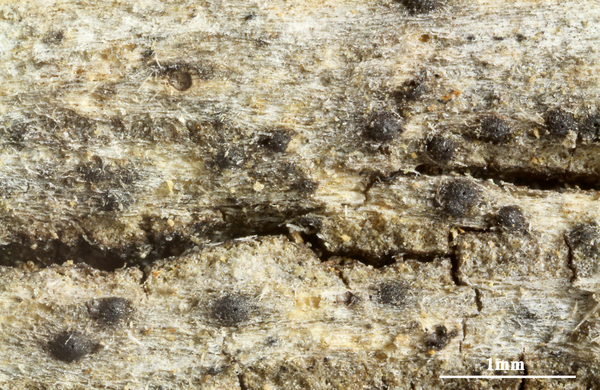

Felix Schumm - CC BY-SA 4.0
[ABL24216], USA, Arizona, Santa Cruz County, Santa Rita Mountains, Madera Canyon, trail to Josephine Saddle, evergreen oak (Q. hypoleucoides, Q. emoryi) – deciduous oak (Q. arizonica) and pine (P. latifolia) forest, 1700-1100 m, intrusive igneous rocks, 31°43’ N, 110°52’ W. Leg. A. & M. Aptroot (no 24216), 31.12.1988, det. A. Aptroot, 1989.
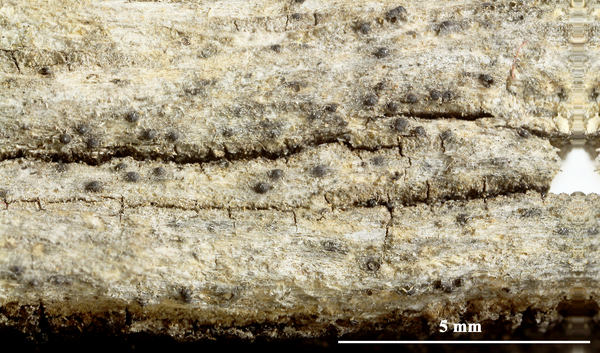

Felix Schumm - CC BY-SA 4.0
[ABL24216], USA, Arizona, Santa Cruz County, Santa Rita Mountains, Madera Canyon, trail to Josephine Saddle, evergreen oak (Q. hypoleucoides, Q. emoryi) – deciduous oak (Q. arizonica) and pine (P. latifolia) forest, 1700-1100 m, intrusive igneous rocks, 31°43’ N, 110°52’ W. Leg. A. & M. Aptroot (no 24216), 31.12.1988, det. A. Aptroot, 1989.


Felix Schumm - CC BY-SA 4.0
[ABL24216], USA, Arizona, Santa Cruz County, Santa Rita Mountains, Madera Canyon, trail to Josephine Saddle, evergreen oak (Q. hypoleucoides, Q. emoryi) – deciduous oak (Q. arizonica) and pine (P. latifolia) forest, 1700-1100 m, intrusive igneous rocks, 31°43’ N, 110°52’ W. Leg. A. & M. Aptroot (no 24216), 31.12.1988, det. A. Aptroot, 1989.
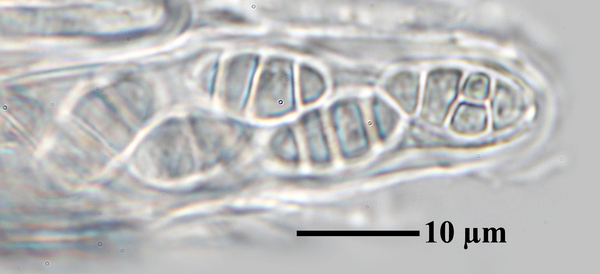

Felix Schumm - CC BY-SA 4.0
[ABL24216], USA, Arizona, Santa Cruz County, Santa Rita Mountains, Madera Canyon, trail to Josephine Saddle, evergreen oak (Q. hypoleucoides, Q. emoryi) – deciduous oak (Q. arizonica) and pine (P. latifolia) forest, 1700-1100 m, intrusive igneous rocks, 31°43’ N, 110°52’ W. Leg. A. & M. Aptroot (no 24216), 31.12.1988, det. A. Aptroot, 1989.


Felix Schumm - CC BY-SA 4.0
[ABL24216], USA, Arizona, Santa Cruz County, Santa Rita Mountains, Madera Canyon, trail to Josephine Saddle, evergreen oak (Q. hypoleucoides, Q. emoryi) – deciduous oak (Q. arizonica) and pine (P. latifolia) forest, 1700-1100 m, intrusive igneous rocks, 31°43’ N, 110°52’ W. Leg. A. & M. Aptroot (no 24216), 31.12.1988, det. A. Aptroot, 1989.
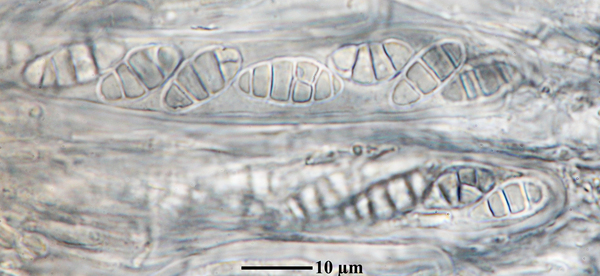

Felix Schumm - CC BY-SA 4.0
[ABL24216], USA, Arizona, Santa Cruz County, Santa Rita Mountains, Madera Canyon, trail to Josephine Saddle, evergreen oak (Q. hypoleucoides, Q. emoryi) – deciduous oak (Q. arizonica) and pine (P. latifolia) forest, 1700-1100 m, intrusive igneous rocks, 31°43’ N, 110°52’ W. Leg. A. & M. Aptroot (no 24216), 31.12.1988, det. A. Aptroot, 1989.
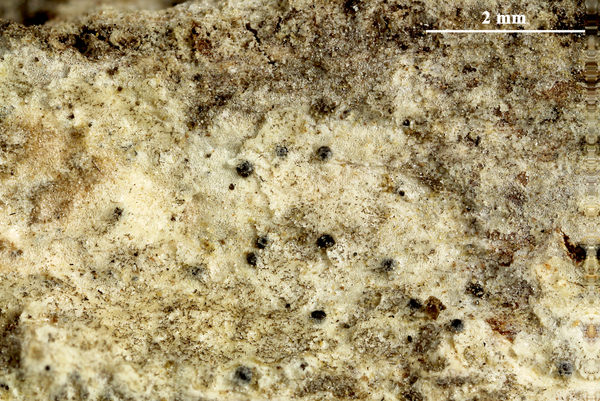

Felix Schumm - CC BY-SA 4.0
[ABL215981], USA, Pensylvania state, Centre County, State College Garden, on Quercus. 100 m, 40°48’ N, 77°50’ W. Leg. A. Aptroot (no 215981), 11.1987, det. A. Aptroot, 1988.
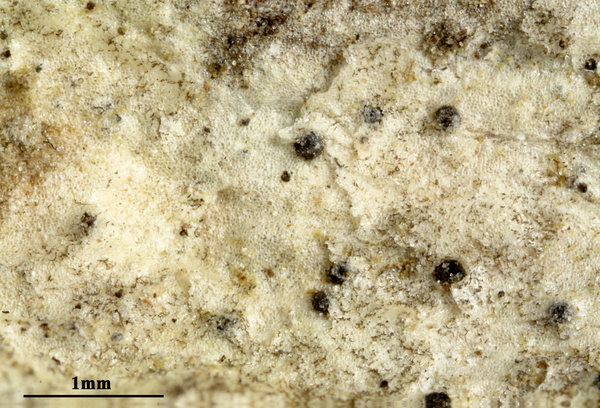

Felix Schumm - CC BY-SA 4.0
[ABL215981], USA, Pensylvania state, Centre County, State College Garden, on Quercus. 100 m, 40°48’ N, 77°50’ W. Leg. A. Aptroot (no 215981), 11.1987, det. A. Aptroot, 1988.


Felix Schumm - CC BY-SA 4.0
[ABL215981], USA, Pensylvania state, Centre County, State College Garden, on Quercus. 100 m, 40°48’ N, 77°50’ W. Leg. A. Aptroot (no 215981), 11.1987, det. A. Aptroot, 1988.
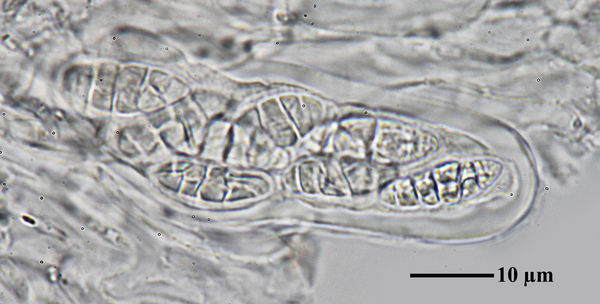

Felix Schumm - CC BY-SA 4.0
[ABL215981], USA, Pensylvania state, Centre County, State College Garden, on Quercus. 100 m, 40°48’ N, 77°50’ W. Leg. A. Aptroot (no 215981), 11.1987, det. A. Aptroot, 1988.
Growth form: Fungus
Substrata: bark
Reproductive strategy: mainly sexual
Pioneer species
Commonnes-rarity: (info)
Alpine belt: absent
Subalpine belt: absent
Oromediterranean belt: absent
Montane belt: absent
Submediterranean belt: very rare
Padanian area: absent
Humid submediterranean belt: absent
Humid mediterranean belt: absent
Dry mediterranean belt: absent

Predictive model
| Herbarium samples |


Felix Schumm - CC BY-SA 4.0
[ABL24216], USA, Arizona, Santa Cruz County, Santa Rita Mountains, Madera Canyon, trail to Josephine Saddle, evergreen oak (Q. hypoleucoides, Q. emoryi) – deciduous oak (Q. arizonica) and pine (P. latifolia) forest, 1700-1100 m, intrusive igneous rocks, 31°43’ N, 110°52’ W. Leg. A. & M. Aptroot (no 24216), 31.12.1988, det. A. Aptroot, 1989.


Felix Schumm - CC BY-SA 4.0
[ABL24216], USA, Arizona, Santa Cruz County, Santa Rita Mountains, Madera Canyon, trail to Josephine Saddle, evergreen oak (Q. hypoleucoides, Q. emoryi) – deciduous oak (Q. arizonica) and pine (P. latifolia) forest, 1700-1100 m, intrusive igneous rocks, 31°43’ N, 110°52’ W. Leg. A. & M. Aptroot (no 24216), 31.12.1988, det. A. Aptroot, 1989.


Felix Schumm - CC BY-SA 4.0
[ABL24216], USA, Arizona, Santa Cruz County, Santa Rita Mountains, Madera Canyon, trail to Josephine Saddle, evergreen oak (Q. hypoleucoides, Q. emoryi) – deciduous oak (Q. arizonica) and pine (P. latifolia) forest, 1700-1100 m, intrusive igneous rocks, 31°43’ N, 110°52’ W. Leg. A. & M. Aptroot (no 24216), 31.12.1988, det. A. Aptroot, 1989.


Felix Schumm - CC BY-SA 4.0
[ABL24216], USA, Arizona, Santa Cruz County, Santa Rita Mountains, Madera Canyon, trail to Josephine Saddle, evergreen oak (Q. hypoleucoides, Q. emoryi) – deciduous oak (Q. arizonica) and pine (P. latifolia) forest, 1700-1100 m, intrusive igneous rocks, 31°43’ N, 110°52’ W. Leg. A. & M. Aptroot (no 24216), 31.12.1988, det. A. Aptroot, 1989.


Felix Schumm - CC BY-SA 4.0
[ABL24216], USA, Arizona, Santa Cruz County, Santa Rita Mountains, Madera Canyon, trail to Josephine Saddle, evergreen oak (Q. hypoleucoides, Q. emoryi) – deciduous oak (Q. arizonica) and pine (P. latifolia) forest, 1700-1100 m, intrusive igneous rocks, 31°43’ N, 110°52’ W. Leg. A. & M. Aptroot (no 24216), 31.12.1988, det. A. Aptroot, 1989.


Felix Schumm - CC BY-SA 4.0
[ABL24216], USA, Arizona, Santa Cruz County, Santa Rita Mountains, Madera Canyon, trail to Josephine Saddle, evergreen oak (Q. hypoleucoides, Q. emoryi) – deciduous oak (Q. arizonica) and pine (P. latifolia) forest, 1700-1100 m, intrusive igneous rocks, 31°43’ N, 110°52’ W. Leg. A. & M. Aptroot (no 24216), 31.12.1988, det. A. Aptroot, 1989.


Felix Schumm - CC BY-SA 4.0
[ABL215981], USA, Pensylvania state, Centre County, State College Garden, on Quercus. 100 m, 40°48’ N, 77°50’ W. Leg. A. Aptroot (no 215981), 11.1987, det. A. Aptroot, 1988.


Felix Schumm - CC BY-SA 4.0
[ABL215981], USA, Pensylvania state, Centre County, State College Garden, on Quercus. 100 m, 40°48’ N, 77°50’ W. Leg. A. Aptroot (no 215981), 11.1987, det. A. Aptroot, 1988.


Felix Schumm - CC BY-SA 4.0
[ABL215981], USA, Pensylvania state, Centre County, State College Garden, on Quercus. 100 m, 40°48’ N, 77°50’ W. Leg. A. Aptroot (no 215981), 11.1987, det. A. Aptroot, 1988.


 INDEX FUNGORUM
INDEX FUNGORUM
 GBIF
GBIF
 DOLICHENS
DOLICHENS
